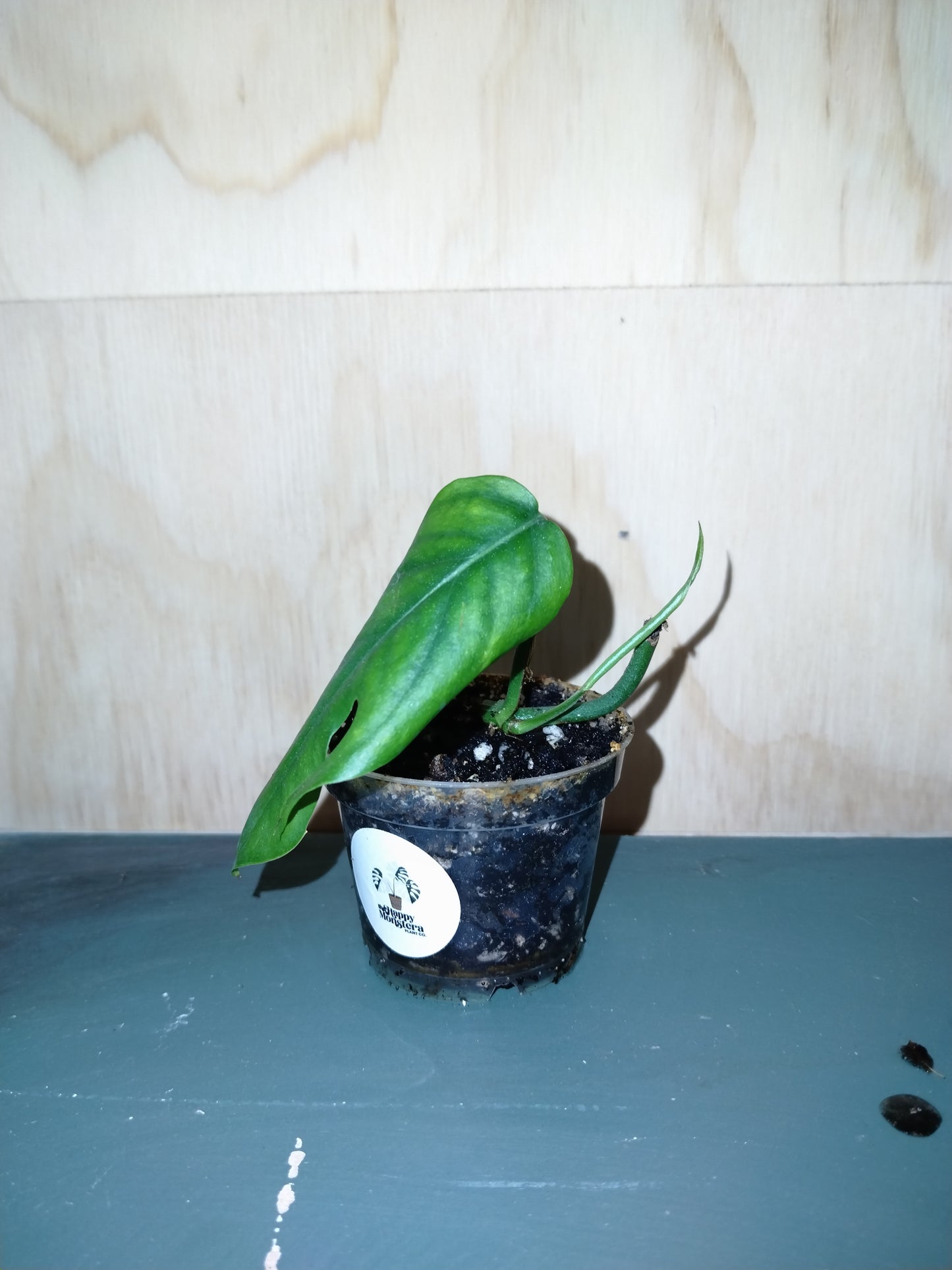The Happy Monstera Plant Co
Baltic Blue Pothos
Baltic Blue Pothos
Couldn't load pickup availability
🌿 Baltic Blue Pothos Overview
Scientific Name: Epipremnum pinnatum ‘Baltic Blue’
Common Names: Baltic Blue Pothos, Blue Pothos
Family: Araceae
Origin: A cultivar of Epipremnum pinnatum, native to Southeast Asia and the Pacific islands
✨ Description
The Baltic Blue Pothos is a fast-growing tropical vine prized for its elongated, glossy leaves with a rich blue-green tint — the “blue” hue becomes more pronounced in cooler months or under moderate light. As the plant matures, the leaves develop natural fenestrations (slits), similar to a Monstera’s, giving it an exotic, sculptural look.
Unlike many other pothos varieties, its leaves have less variegation and more of a consistent, deep tone, making it stand out among lighter cultivars like Cebu Blue or Golden Pothos.
🌞 Light Requirements
-
Prefers bright, indirect light for optimal color and growth.
-
Tolerates medium to low light, but leaf fenestrations and “blue” tones may diminish.
-
Avoid harsh direct sunlight — it can cause leaf scorch.
💧 Watering
-
Water when the top 1–2 inches (2.5–5 cm) of soil are dry.
-
Keep soil evenly moist but never soggy.
-
Overwatering can lead to root rot.
-
Slight underwatering is better tolerated than excess moisture.
🌡️ Temperature & Humidity
-
Ideal temperature: 65–85°F (18–29°C).
-
Average household humidity is fine, but higher humidity (50%+) encourages faster growth and larger leaves.
-
Keep away from cold drafts or heat vents.
🌱 Soil
-
Use a well-draining, airy mix: potting soil + perlite + orchid bark or coco coir.
-
Ensure drainage holes are present to prevent soggy roots.
🌿 Growth & Maintenance
-
Fast-growing under ideal indoor conditions.
-
Can be trained to climb a moss pole or trail from a hanging basket.
-
Prune to shape and encourage bushier growth.
-
Fertilize every 4–6 weeks during the growing season (spring–summer) with a balanced houseplant fertilizer.
🌸 Propagation
-
Easily propagated by stem cuttings in water or moist soil.
-
Rooting usually occurs within 2–4 weeks.
⚠️ Common Issues
-
Yellow leaves: Overwatering or poor drainage.
-
Leggy growth: Not enough light.
-
No fenestrations: The plant is still young or light levels are too low.
🪴 Toxicity
-
Toxic to pets and humans if ingested (contains calcium oxalate crystals).
-
Keep out of reach of cats, dogs, and children.
🌈 Fun Fact
The Baltic Blue is closely related to Cebu Blue Pothos but can be distinguished by its deeper, greener-blue color and earlier leaf fenestrations — often appearing on plants as young as one year old.
Share

